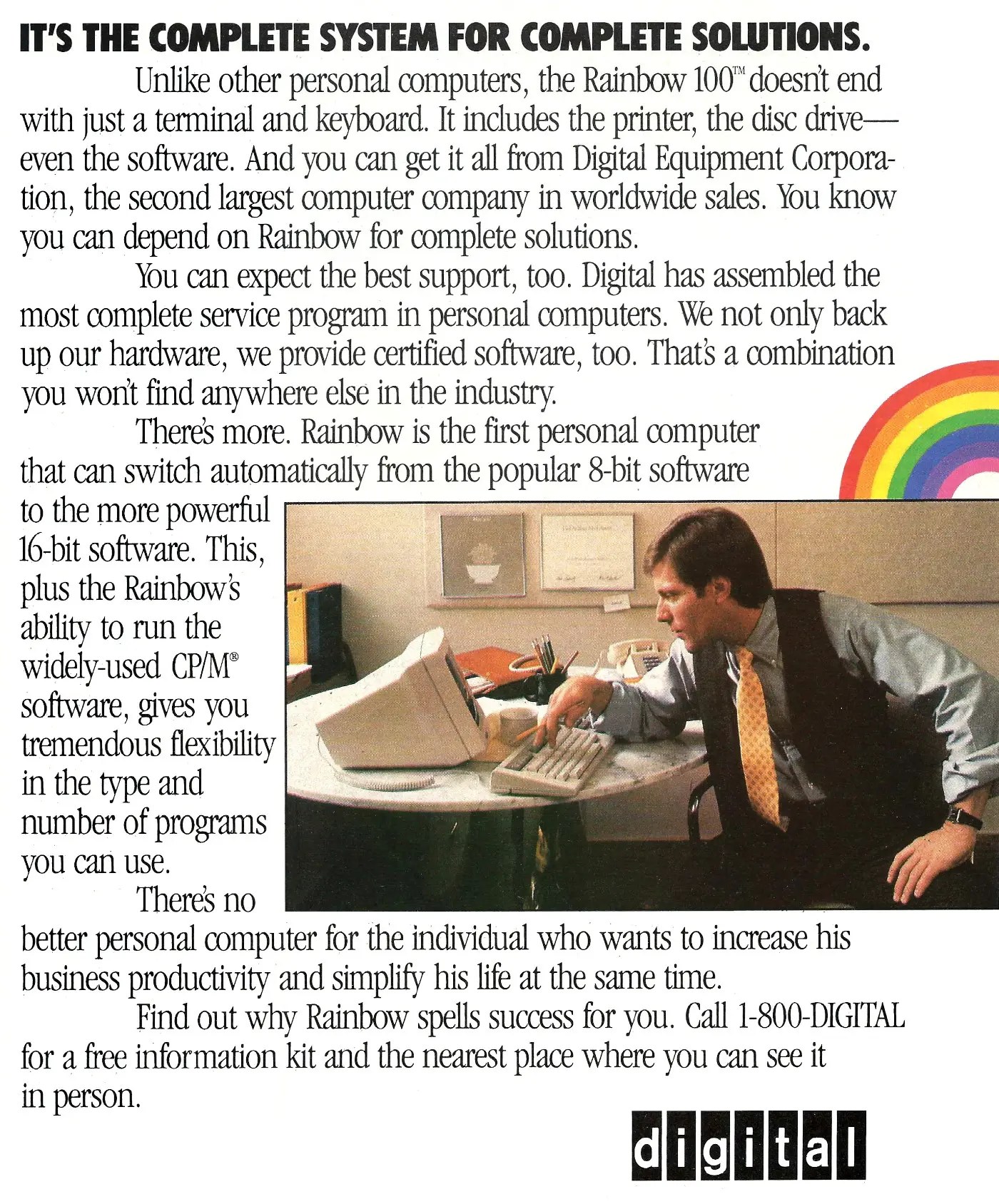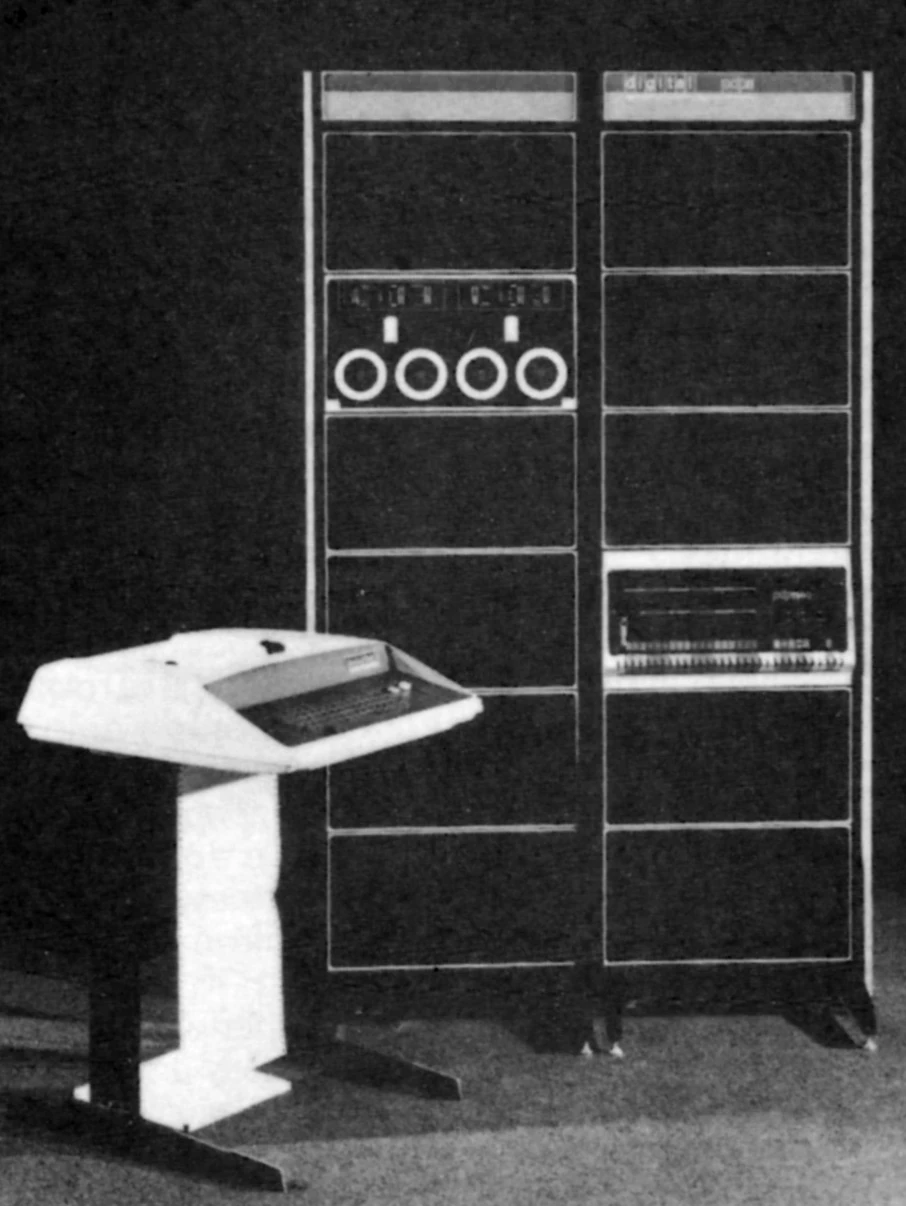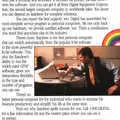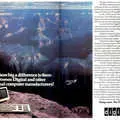
Digital Advert - June 1983
From Unknown

Rainbow 100 - It's The Complete System for Complete Solutions
No collection of adverts about the early computer industry would be complete without at least one featuring Digital - otherwise known as Digital Equipment Corporation or DEC.
This was the company that built not only the well-known VAX range of minicomputers, but also the legendary DEC PDP-11 - the computer that the first Unix was written on, originally in the machine's own native PDP-11 Assembly language.

A dual-cabinet version of the DEC PDP-11/40. From Personal Computer World, July 1978Thanks to its use of an at-the-time innovative bus architecture, making the system highly configurable and adaptable, the success of the PDP-11, launched around 1970 and available in sizes from desk-top (via the LSI-11) to large refrigerator, came to define the minicomputer industry for years.
Meanwhile, this particular advert is for the Rainbow 100 - a hybrid machine that was part VT-220 terminal, part 8-bit Zilog Z80 CP/M machine and part 16-bit Intel 8088.
These types of machine were not uncommon at the time and acted as "gateways" - gently progressing users from the old 1970s world of 8-bit computing (often in CP/M or even BASIC) to the shiny, relatively new world of 16-bit computing and the soon-to-be almost total dominance of the IBM PC format and Microsoft's MS-DOS.
The machine was also unusual in not just supplying 8- and 16-bit CPUs but in being able to tell the difference in which sort of disk had been inserted and running it on the right processor - Z80 if a CP/M program was loading and the 8088 if it was something 16-bitty, like CP/M-86 or maybe MS-DOS[1].
The Rainbow, which was finally launched late at least nine months after it was announced[2] had its fans, not least of which was Guy Kewney of Personal Computer World, who questioned why the world went wild about IBM's 5150 when there were several reasons to go wild about the Rainbow.
Retailing at about £2,400 (£10,600 in 2025), it was one of the cheapest 16-bit machines on the market, although Kewney was less impressed with the pricing policy for extra memory.
There were also questions about the choice of the unknown CP/M-86/80, which combined 8- and 16-bit operations, as well as the "pretty, but non-standard disks". However, he rounded off by saying:
"By the end of the year there will be people buying things like standard S-100 CP/M boxes instead of Rainbows, but I can't think why. I suppose it will all be due to DEC's carelessness in failing to put the ninth, second and thirteenth letters of the alphabet on the box"[3].
Reviewing the Rainbow in November 1982's Personal Computer World, David Ahl was also reasonably positive about the machine, suggesting that it "should have a long successful life". He wrote:
"Some years ago, the IBM name was thought to be worth 20 to 25% of the price of a computer. In other words, a competitor would have to be more than 20-25% lower than the IBM to be in the running. In the mini world, the same is true with DEC today, although the difference is more like 15%. However, as a result of the enormous mini customer base and excellent reputation of DEC, it is likely that the DEC personal computers will find a ready market. Will the DEC entries harm Apple, IBM or Tandy? I doubt it. If anything, the biggest effect will be to further legitimise the personal computer itself as another blue-chip name is added to the field".
Despite the early positive reviews, the Rainbow was ultimately a failure, with David Ahl - having revised his opinion - writing it up as a disastrous foray into the personal computer market and saying it was:
"over-designed, late, not IBM compatible, expensive and poorly-distributed".
DEC did try to make a comeback in 1985 by launching a desktop version of its VAX 11. Called the Microvax II, the machine retailed for $20,000 - about £53,600 in 2025 - but could at least support up to 16 users at about 90% the performance of a full-size VAX.
Date created: 01 July 2012
Last updated: 11 December 2024
Hint: use left and right cursor keys to navigate between adverts.
Sources
Text and otherwise-uncredited photos © nosher.net 2025. Dollar/GBP conversions, where used, assume $1.50 to £1. "Now" prices are calculated dynamically using average RPI per year.

